Bill Parker: A Matter of Influence
Collected Works by Students, Friends & Colleagues of William E. Parker
This exhibition brings together a selection of artwork created by artists influenced by the teaching of William E. (Bill) Parker (1932-2009), as curated by Bob Martin. The Rhode Island Center for Photographic Arts is pleased to be able to present this exhibition to honor and reflect on Bill Parker’s influence on photography and the careers of the assembled exhibitors. Looking for a way to underscore Bill’s efforts, and the lasting effect he’s had on the included artists, this exhibition is not organized by artist, but presented to highlight some of the major themes in Parker’s teaching. Each invited artist had their subsequent careers, influenced to some large degree by their association with Bill, either as student, friend or colleague.
In addition to concepts and work by William E. Parker, the exhibition includes a small collection of work by: Renee Allie, Mauro Altamura, Stephan Apicella-Hitchcock, John Back, Reenie Barrow, Stephan Brigidi, Hilary French, Wendy Gogel, Peg Harrigan, Ted Hendrickson, Bob Kelley, Mary Kocol, Dean Kotula, Bob Martin, Stephen Petegorsky, David Seigel, Jim Stone, Brian Swift & John Willis. I know there are many others, not included here, who Bill influenced during his long career, and we encourage you to share your comments and reflections here, or on social media @RIPhotoArts.
– David DeMelim,
Managing Director,
RI Center for Photographic Arts
A small selection of work on exhibit
Opening Reception: June 19th 5:00 – 8:00pm
Closing Reception: July 11th 5:00-7:00pm
On View: Thursday, June 19th – July 11th
Bill Parker: William E. Parker (1932 -2009)
Educator, Mentor, Friend
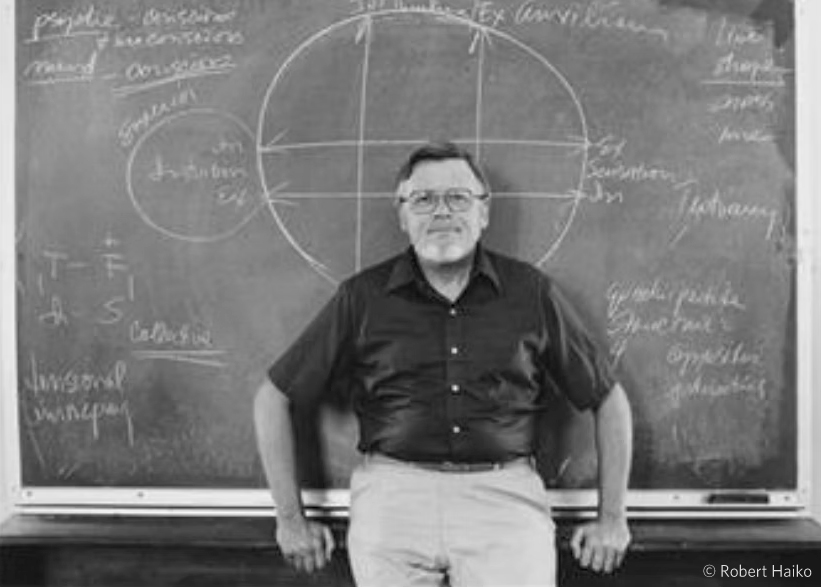
About: William E. Parker
Bill Parker was an outstanding visual arts educator, having served such institutions as Pratt Institute; Parsons School of Design (both as dean and vice president); the School of Fine Arts at the University of Connecticut (1969-94); and the Rhode Island School of Design, where for two decades, he was a visiting artist in graduate photography.
A graduate of the University of Florida, Bill received its Distinguished Alumnus Award in 2000 in recognition of a rich career in art education. Bill’s writings on 19th and 20th century photography appeared in numerous periodicals, and he edited many lauded books on the history of photography. He was a lifetime member of the National Society for Photographic Education, having served as chairperson, and a member of the Board of Trustees of the Visual Studies Workshop, SUNY Rochester. For 30 years, Parker was an active member of the New York C.G. Jung Foundation for Analytical Psychology and the analytical psychology organizations of New York and Boston. A renowned lecturer, he remains a recognized pioneer in the interpretive analysis of photographic and intermedia imagery from Jungian perspectives.
Parker’s personal art combined painting and photography and were represented in numerous national and international group exhibitions and one-person shows. He received two individual artist grants from the National Endowment for the Arts, and in addition to private holdings, his work is represented in such collections as the Harn Museum at the University of Florida, RISD Museum of Art, Princeton Art Museum, the International Museum of Photography at George Eastman House, DeCordova Museum, the J. Paul Getty Museum, San Diego Museum of Photographic Arts, Los Angeles County Museum of Art, and the Philadelphia Museum of Art.
As a teacher, Parker mentored artists-in-the-making for more than four decades. Recognized for his dedicated activity as a photographic educator, Parker received the first American Photo Teacher of the Year award in 1990.
About the Exhibition: by Bob Martin
In a search for our show’s title, Brian Swift suggested a favorite trope and oft-repeated phrase from Bill Parker’s teachings, Amor Mundi, “love of the world,” which has its roots in the philosophy of Hannah Arendt and implies an obligation for people to engage with the world. This theme ran throughout Bill’s lectures: From the Renaissance forward, subjectivity increased to the point where Western culture found itself, via Descartes, doubting the existence of anything outside of the knowing self. Viewed in this context, photography was born as a way of confirming the presence of the world without subjective intervention. It is the first medium in which the physics of light and the chemistry of earthly elements combine to create an image. In his lectures titled, Ontological Aspects of the Still Photograph, Bill emphatically asked his students to consider the implications of choosing an artistic medium in which light is the author of the image, and to humbly acknowledge that our efforts with photographic media rely heavily on chemical and physical processes that lie beyond human enterprise. He did not think of photography as simply a technology that came into being in the 1820s or 30s, but an aspect of human consciousness in evidence as early as the caves at Lascaux, a history that he traced through his lectures on the Mimetic Tradition in Art.
Bill Parker was also a follower of the psychology of Carl Jung. He applied the theory of archetypes to the creation and interpretation of images: his introductory lectures were a methodical and thorough explication of the differences between sign, symbol, and archetype. He applied Jung’s theory of psychological types to photographic practice, offering photographers an opportunity to expand the expressive potential of their work. Part of this exhibit is organized around this unique approach.
Bill Parker taught artists-in-the-making to “cast their nets wide” in their search for meaning in art and life. The matter of his influence, as expressed in this group exhibit, is as broad as the range of his teachings.
– Bob Martin
Read Complete Exhibition Statement
Take a tour through the gallery in this 360˚ view
The Collected Students, Friends & Colleagues

About: Bob Martin
In addition to being an active member of the Rhode Island Center for Photographic Arts, currently teaching at the Wheeler School in Providence, Bob organized and curated this exhibition to honor Bill Parker, his influence on those around him and to celebrate Bill’s approach to photography.
Bob is an artist and teacher living in Rhode Island. He earned an MFA from the Rhode Island School of Design in 1988 and has taught art, photography, and art history at the Wheeler School for 35 years. His photography has centered on several long-term projects, most notably a document of his family, which began in 1986. He has been involved in public art in Providence, producing four large-scale murals, three painted and two in ceramic tile. Martin has also engaged in several archival projects. For the Wheeler School, he has researched and archived the legacy of founder Mary Colman Wheeler, curating three exhibitions and producing three publications. He has created a digital archive for the photography of Margaret Perry, daughter of artist Lila Cabot Perry, and a website for the art, lectures, and writing of Bill Parker.
Additionally, Martin has created a website as an archive of Bill’s teaching, published essays, and artwork.
Simply put, Bill Parker was, is, and will continue to be the greatest artistic influence in my life. His friendship and guidance extended beyond the scope of art. He cared deeply for his students, treating us with great respect and admiration, welcoming us into this quirky little group of artists who relied so heavily on the automatic impression of light in creating an image. His teaching style was legendary: dressed more for a wedding reception than a classroom, his Floridian accent boomed off the lecture hall walls, delivering a wide array of ideas drawn from the history of art, photography, literature, philosophy, and science, the nature of consciousness, the principles of Jungian psychology, and a trove of personal stories: all aimed at bringing students to a greater awareness of what it means to embrace a life in the arts. His intuitive mind resisted the order required to load an eighty-slide carousel, instead pulling images out of his famous metal cases one at a time, not quite knowing where the associative train might lead. His teaching style paid high tribute to authors and scholars past and present. And while he could recite from memory an array of quotable quotes from the likes of Locke, Bazin, Cavell, Berger, DeDuve, and Sontag (to name but a few), he would often haul a large suitcase full of books and periodicals that he would cite and share during lectures.
– Bob Martin January, 2025
Renee Allie
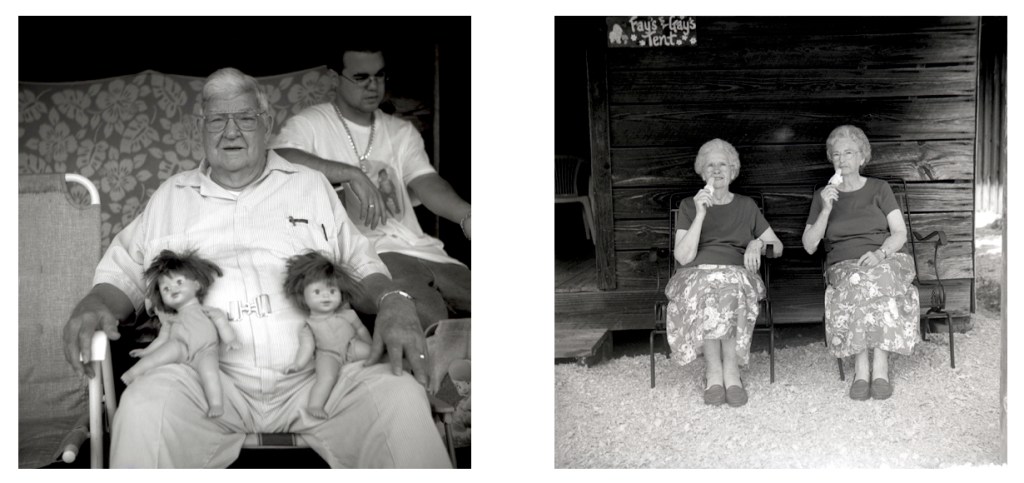
William Parker was inspirational; he taught with an exuberance and knowledge of the material that was unprecedented. I seem to remember him putting his whole body into teaching. Moving about the room with energy and enthusiasm, he exhibited a kind of manic flair for presenting the subject that was so unlike any of my other college instructors; it was a portal into a world outside of my own experience and it was exciting!
Renée grew up in Storrs, Connecticut, home of the University of Connecticut. In High School, she excelled in art classes of multiple disciplines, received awards and attended continuing education classes at the University. She continued studies at State University College (SUNY) at New Paltz, Studio Art Centers International in Florence, Italy; and in 1983 received a Bachelor of Arts at the University of Connecticut. In 1984 she moved to New Orleans, Louisiana where she has lived since.
She was a co-owner of Icons Gallery in 1991-93 and owned Rabbit Ears and later Malarky Art and Ellipsis Gallery from 2011 to 2024.
She served on the board of Recycle for the Arts and was a key officer of the New Orleans Photo Alliance. Her work has shown at the New Orleans Museum of Art, the Contemporary Arts Center, the Ogden Museum of Southern Art and in many local and regional galleries. In 2024 she received an award for the best black and white photograph at the Montgomery, Alabama Photo Festival.
Mauro Altamura
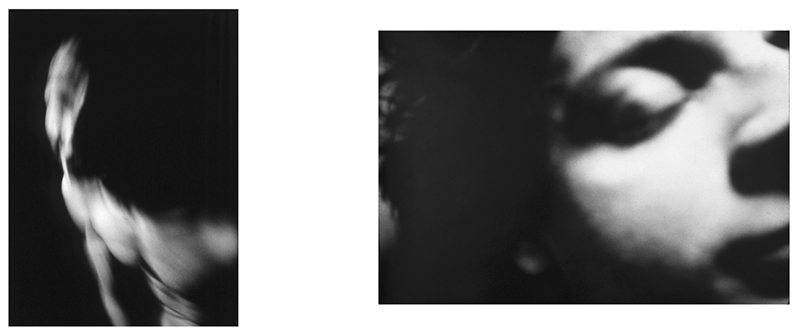
Studying with William Parker changed the course of my art production. After a summer course with Bill at the Visual Studies Workshop in 1981, I entered Jungian Therapy. Over the course of ten years of analysis, my photographic practice became an exploration rather than a documentation. I wrote a transcript of my dreams each morning – a practice I still keep – and began to choreograph those dreams as tableaux vivants. A second group of photographs was a seven-year-long series of self-portraits that attempted to represent the Jungian concept of the shadow. In effect, I attempted to deal with my subconscious self through my art. These explorations would not have started without my interactions with Bill.
Mauro Altamura received an MFA in Visual Art from SUNY Buffalo and an MFA in Creative Writing from Rutgers, Newark. He was an Associate Professor at New Jersey City University and at John Cabot University in Rome. His art is exhibited internationally and he received photography fellowships from the NEA, NYSCA, and NJSCA, and is in museum and private collections. His prose is published in numerous literary journals and was awarded a Prose Fellowship from NJSCA.
Stephan Apicella – Hitchcock

I am not precisely sure what I was expecting when I finally arrived for graduate school at Rhode Island School of Design; however, it certainly was not to encounter a fully developed intellect housed within a hyperactive teenager, mixed with a curious monkey, but to my joy, that is what I found after the first class I took with William E. Parker… I still frequently think of Bill. In my 28th year of teaching, I often imagine how he would handle a situation to inspire a student or encourage someone’s curiosity.
Stephan Apicella-Hitchcock was born in New York City and received his B.A. from Hampshire College and M.F.A from Rhode Island School of Design. He divides his time between teaching in New York, Rome, and Tokyo.
He has lectured about his work at the Whitney Museum of American Art, Arts Initiative Tokyo, and Harvard University and was a resident artist in the Lower Manhattan Cultural Council’s WorldViews studio residency program at the World Trade Center. His projects have taken place in America, Austria, The Kingdom of Bahrain, China, France, Germany, Japan, Jordan, Norway, Spain, Switzerland, and Syria.
He has taught at the Tokyo National University of Fine Arts, Rhode Island School of Design, the School of the Museum of Fine Arts Boston, the School of Visual Arts, Pratt Institute, and Parsons School of Design. For the past 28 years, he has taught in the Department of Theatre and Visual Art at Fordham University in New York City, where he Clinical Professor and Head of the Visual Arts Program.
John Black
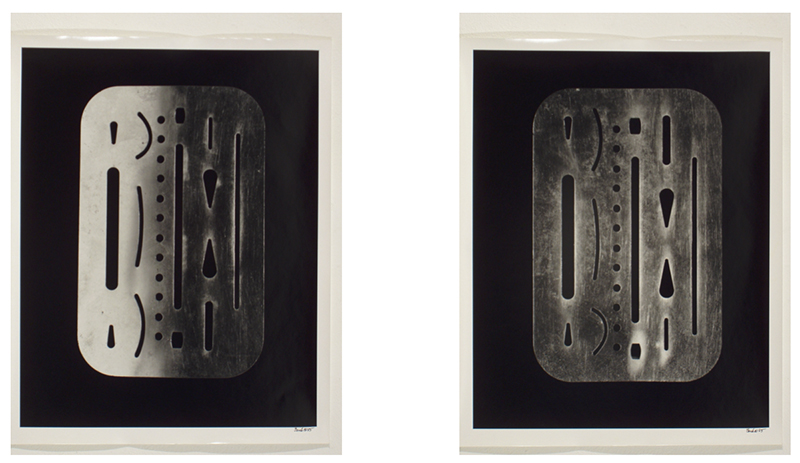
Bill Parker had the knowledge and intuition to see into any type of art work. And you always came away from his discussion with a greater world view. He was a psychologist, historian and investigator of life. All with a sense of humor.
John Back earned an MFA in photography from the Rhode Island School of Design in 1979. He has published and exhibited his work nationally and can be found in collections nationally and internationally. John’s work is included in the collections of: The Center For Creative Photography, Tucson AZ; Bibliotèque Nationale de France, Paris; George Eastman House, Rochester NY; Madison Museum of Contemporary Art, Madison WI.
I have worked as a freelance and fine art photographer since 1975. I currently live in Barryville, New York and maintain a photography studio in Greenwich Village, in what was previously a rehearsal space for Lou Reed & The Velvet Underground.
Solo Exhibitions: Perimeter Gallery, Chicago IL 1993; J. Walter Thompson, NYC 1987; Burlington College, Pemberton NJ 1982; The Madison Art Center, Madison WI 1977;
Publications: yourdailyphotograph.com “Clothespin”http//eepurl.com/ivjY8M; 2015“Can Opener”us5.campaign-archive2.com; “10x10x10 Tieton 2012 Marquand Editions; Photographic Education Society, “Portfolio ’78 &’79”; “Constructs” 1976, self- published.
Reenie Barrow

In thinking about Bill Parker’s influence on my work, so many memories come flooding back: Walking into his office at the University of Connecticut, screwing up the courage to lay down the few prints newly accomplished, and waiting to hear if anything had merit. With his usual wit, intelligence, and eye that could find an idea germinating in your work, he left me practically running out the door to pursue this thread. I did…
Reenie Barrow’s photographs represent her long-standing interest in documenting the details of daily life around the world. Her career has taken her to a variety of countries, most notably Vietnam, Greece, Sweden, France, Mexico, Cuba, Spain and several Caribbean islands. Recently she had the opportunity to travel to Easter Island, a tiny speck of South Pacific lava which has the distinction of being the most remote island in the world. This 64-square-mile island is dotted with more than 800 gigantic and breathtaking moai ( heads and bodies). She had the opportunity to stand shoulder to shoulder (except for an imbalance of 20 feet or so) with them and try to capture their mana, or spiritual power and energy on her film. Most recently she has focused her camera on using flowers as metaphors for our own thoughts, emotions, and observations.
Barrow has published and exhibited nationally and internationally.
Stephan Brigidi

I first met Bill Parker when he gave a talk called Photographic Symbolism as part of the inauguration ceremonies of the new URI Fine Arts Complex in 1972. I was blown away by his intelligence, and especially how this man could go on talking non-stop for two hours.
I was deeply impressed and fatigued.
Stephan Brigidi, born Providence, Rhode Island in 1951, received an MFA at RI School of Design 1976. He was Fulbright-Hays Fellow to Italy from 1977-78, and awarded a Photographer’s Fellowship from the NEA. He has been invited to artist residencies at MacDowell, Yaddo, and MASS/MoCA. Brigidi is a retired Professor of Aesthetics & Photography, and recently a visiting artist at the American Academy in Rome in 2023. A dedicated artist-educator with publications including, Angels of Pompeii in 1992, Remarkable People 1995, Afraid of the Dark: A Venetian Story, 2015, The Fire of Rome 2016, Portrait 2017, and ROME 1970s in 2019. His photography has been acquired by more than forty museums in the US and Europe.
Hillary French
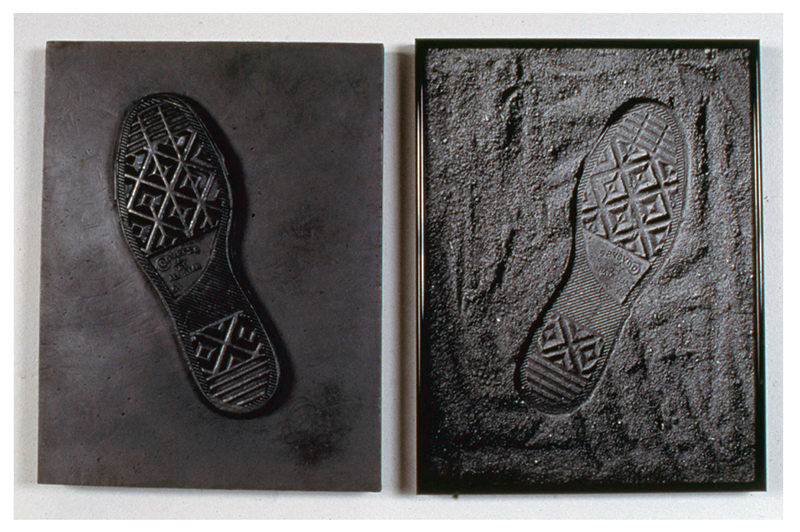
I remember Bill Parker most vividly as a whirling force of energetic knowledge with a natural predilection for encouragement and inspiration. He was loud and warm and positive – all gusto and validation for art, ideas, people and students. Overflowing with prodigious knowledge and love of Photography and Art and their Histories – and Psychology, History, Culture, Philosophy, Science Literature, Semiotics – seemingly everything.
Hilary French was born and raised in the Boston area. During her college and graduate education, and her earlier teaching career she lived in Colorado, Wisconsin, Rhode Island, Connecticut Maine and Massachusetts. She currently lives in Wayland, MA where she raised a family and has been for 30 years. She has exhibited nationally and served as a visiting artist/critic throughout the northeast.
Wendy Gogel

Being Bill Parker’s student affected not only my art, but my outlook on life. He brought a broad academic view to the study of photography—analyzing sociopolitical factors along with movements in the arts, psychology, and science, and adding context that enriched the stories told by the images. Bill was a master of signs and symbols, leading me to look for meaning not just behind every image, but in each day.
Education:
Graduate School of Library and Information Science, Simmons College, Boston, MA
• Master of Science in Library and Information Science with concentrations in Management of Archives and Visual Collections, 1990 University of Connecticut,
• Bachelor of Arts in Spanish with a concentration in Photography, Cum Laude, 1985 National Autonomous University of Mexico, Mexico City, Mexico—Fall Semester, 1983 St. Louis University, Madrid, Spain—Spring Semester, 1980
Wendy has exhibited her work nationally and worked in Museum Services for several decades, during which time she also curated several archival collections of photographs.
Peg Harrigan

Billy Parker’s time as a visiting scholar at the School of the Museum of Fine Arts, Boston, was my introduction to him as an educator. Fondly, I remember his hilarious hand-coloring demonstrations and his insightful lecture on the topic of “Manifest Destiny and the Rape of the American Landscape.” Ten years passed before I began graduate studies at the University of Connecticut, Storrs with Bill in the second M.F.A. cohort of the Department of Fine Arts.
PHarrigan is a recipient of a Massachusetts Cultural Council/New England Foundation for the Arts Regional Fellowship for Visual Artists in Photography and a SMFA Alumni Traveling Fellowship awarded by the Trustees of the Museum of Fine Arts, Boston. Her work has been exhibited in regional and national shows and is represented in the permanent collections of The Leslie-Lohman Museum of Art, New York, The Picker Art Gallery, Colgate University, Hamilton, NY, The Pinhole Resource Collection of the Palace of the Governors Photo Archives at the New Mexico History Museum, Santa Fe, NM and in the Moving Violations Motorcycle Club archive of the Schlesinger Library/Radcliffe Institute, Cambridge, MA.
Ted Hendrickson
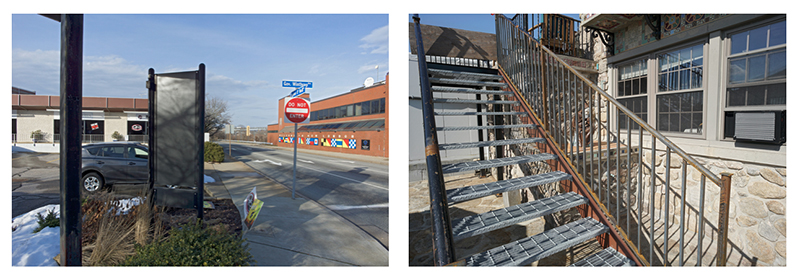
William Parker was inspirational; he taught with an exuberance and knowledge of the material that was unprecedented. I seem to remember him putting his whole body into teaching. Moving about the room with energy and enthusiasm, he exhibited a kind of manic flair for presenting the subject that was so unlike any of my other college instructors; it was a portal into a world outside of my own experience and it was exciting!
A native of New London, Connecticut, Ted Hendrickson studied photography at the University of Connecticut with William E. Parker where he received BA and MFA degrees, and at the Rhode Island School of Design where he earned a Master’s degree in Art Education. Hendrickson’s work has been featured nationally in numerous one-person and group exhibitions. He received a commission from the Connecticut Commission on the Arts to photograph the towns of New London County for permanent exhibition at the New London County Court House. His work is included in many prestigious public and private collections. Hendrickson taught Photography and the History of Photography at Connecticut College, where he is an Associate Professor Emeritus in the Department of Studio Art. He has exhibited his work regionally and nationally.
Robert Kelley

Since leaving graduate school in 1990, I have moved several times including across the country. For 30 years I have saved my “William Parker” file. It is a little over an inch thick. I saved his syllabi, assignments, references, class schedule, handwritten notes, critical analysis, bibliographies, Keegan Type Indicator materials, the Compass Points of Consciousness Diagram, and the yearly holiday card with the Parker Family yearly updates. I even saved the envelopes so I would always be able to find him if I needed advice or inspiration.
Education: 1990 Rhode Island School of Design, MFA, Photography, Honors Graduate
1984 Massachusetts College of Art, Boston, MA, BFA, Photography, Honors Graduate
1980 Massasoit Community College, Boston, MA, AD, Graphic Design, Cum Laude Graduate
Bob has lectured and exhibited his work nationally.
Mary Kocol

One vivid memory of Bill Parker’s lectures is his linking the negative-positive aspect of photography to the ancient cave paintings of Lascaux. The idea of the negative-positive image existed long ago in the subconscious of man, when a cave person placed their hand on a cave wall and applied pigment around it, therefore creating a ‘negative’ image of their outstretched palm. The human evidence forever recorded on a cave wall. Photo – Graphy meaning Light -Writing, the direct impression, may have been a pre-historic thought, not just a 19th Century invention.
Mary Kocol is a fine art photographer based in Somerville, Massachusetts. Her earlier urban twilight photographs are among the permanent collections of the Museum of Modern Art, J. Paul Getty Museum, Museum of Fine Arts Boston, DeCordova Sculpture Park and Museum, Boston Public Library, Victoria and Albert Museum in London, and others. She’s a recipient of the Guggenheim Fellowship and several Massachusetts Local Cultural Council grants. Recently, she received a 2024 LLC Visual Art Fellowship Grant from the Somerville Arts Council.
Born in Hartford Connecticut, Mary was educated at the University of Connecticut, and the Rhode Island School of Design where she earned a Master of Fine Arts degree in Photography.
She works as a professional photographer at Harvard University’s Art Museum where she photographs the vast and diverse art collection. She is also a film animator, writer, book artist, and Massachusetts master gardener. Her photographs are represented by Gallery NAGA, in Boston. Her photographs have been exhibited nationally and can be found in national and international collections.
Dean Kotula

“I met Bill Parker through a network of photographers. My friend Cherie Hiser reached out to Alex Sweetman on my behalf, knowing I was searching for an editor with experience in photography books. Alex put me in touch with Bill, who expressed an interest in the project, and we arranged to meet in Boston. I was uneasy—personally, I had a lot riding on this. From the outset, I was baffled. Why on earth was this man, an academic from the Deep South clad in a vest, bowtie, and beret (his dress shirt was noticeably creased), so animated about a book I’d assumed he might politely decline? Over lunch, we cemented plans to collaborate, and suddenly Bill glanced at his watch and said, “I’ve got to get back to the department store to return this shirt!” This man I came to love was a genius on so many fronts, while his quirks kept him human and relatable.”
Dean Kotula is a documentary photographer who freelances and works on long-term projects. His work is both personal and political. He is particularly interested in civil rights, sustainable fisheries, the environment, labor, and animal protection. Upon witnessing his first latent images appear in a tray of developer in his dad’s darkroom at the age of ten, he was hooked on photography. As a shy kid, he needed an excuse to engage with the world. Photography gave him purpose, while the camera gave him cover:
“The camera was and remains my entrée to the world. It once doubled as a shield I could hide behind until I grew confident. As a steady companion for over four decades, my photographs are diaristic in nature, with themes being the chapter headings in the story of my life.”
From 1985 to 1990, Dean was employed by the National Marine Fisheries Service as an observer aboard foreign fishing vessels harvesting fish in U.S. waters. He photographed with zeal, understanding that garnering this rare access was a privilege. Little did he know, these would also be the final years that foreign nations were permitted to fish in U.S. territorial waters so these images also serve as documents depicting a significant turning point in the history of U.S. fisheries.
Stephen Petegorsky

From the first time I heard Bill speak, it was clear to me that his approach to photography was different from anything to which I had been exposed before. Combining his Jungian interests with a vision of photography that gave value many different approaches to image-making, he made me think about my work in ways that were challenging and productive.
His expectations that students should be able to speak and write intelligently about their work prepared me well for so much that came later in my career.
As a teacher, he I never suggested that one type of image-making was superior to another – only that integrity and honesty of effort mattered.
Stephen Petegorsky is an artist and freelance photographer based in Florence, Massachusetts. Born in New York City, he graduated from Amherst College and later received his M.F.A. in Photography from Rhode Island School of Design. He has taught at Amherst College, Smith College, Hampshire College, and the University of Connecticut.
His work has been exhibited internationally and is in collections throughout this country as well as in Europe. Most known for his black and white landscapes, he has for many years also made images based on photographs of cleared and stained animal specimens typically found in natural history museums and university Biology departments. Since 1998 he has documented the work of the Polus Center for Social and Economic Development, a human services agency that works internationally to improve the lives of victims of conflict and people with disabilities.
David Siegel
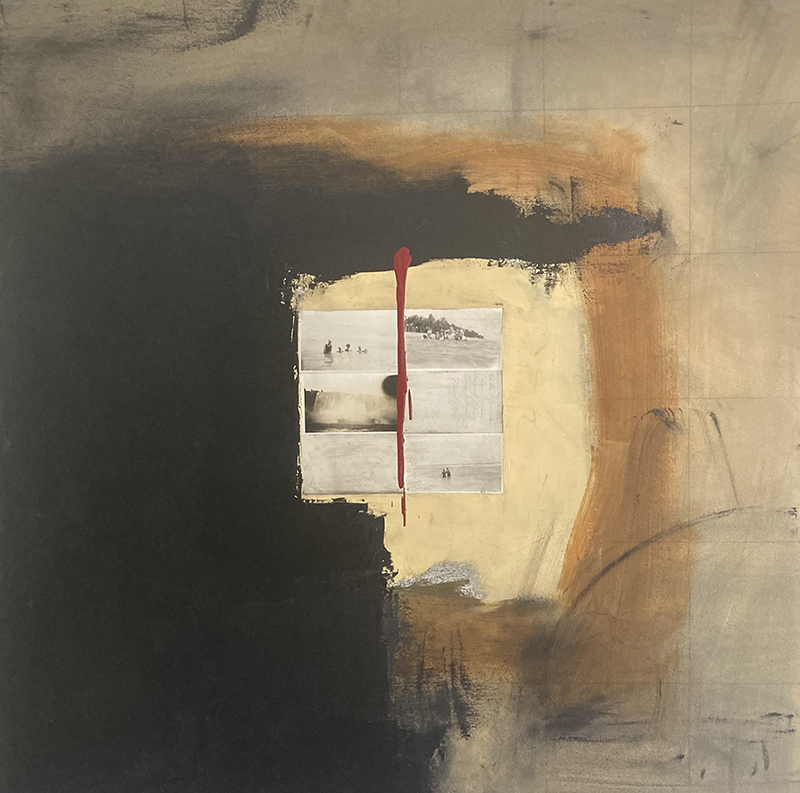
Bill Parker woke me up. I arrived to graduate school at RISD confident and adept at a certain kind of picture-making. He shook that confidence with ideas about the tangible and intangible, subject and object, material and immaterial, physical and metaphysical. I was thrilled by this, but more than a little bit terrified. Unsure now of what I was doing, and where I was going with my work. What a gift that tangled and tortured uncertainty turned out to be!
David Siegel has been collaborating with Scott McGehee as a writing and directing filmmaking team since 1990. Their films have won numerous accolades and awards, and have been selected at festivals including Cannes, Sundance, Telluride, and Toronto. Feature credits include 1993’s Suture; The Deep End (2001), Bee Season (2005), What Maisie Knew (2013), Montana Story (2022) and The Friend (2025). David lives and works in New York City.
Jim Stone
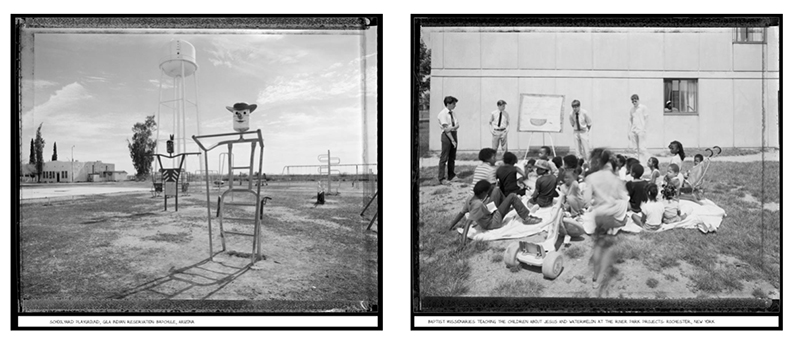
In advance of writing this, I re-read the accumulated remembrances that followed Billy Parker’s 2009 online obituary. It doesn’t seem that I can add anything to the heartfelt expressions of his effect on the lives and art of so many. His unique combination of serious erudition with mischievous wit was a model for us all. I didn’t meet him until I was no longer a student; we were colleagues. Nonetheless, he was a profound influence. When my own teaching schedule permitted, I would sit in on his classes at RISD, always in awe of his ambit. His intellect seemed to leave us all in the dust; even though emulation was impossible, his presence generated energy, enthusiasm, and aspiration in all those around him.
Jim Stone, a photographer, teacher, and author, turned to photography while studying engineering at MIT. His photographs have been exhibited and published internationally, and collected by the Museum of Modern Art, Boston’s Museum of Fine Arts, the Smithsonian American Art Museum, and the Los Angeles County Museum of Art, among many others. Five of his books are in wide and continued use for university-level courses: A User’s Guide to the View Camera, Darkroom Dynamics, and—with co-author Barbara London—Photography (13th edition), A Short Course in Photography (10th edition), and A Short Course in Digital Photography (4th edition). There are three artist’s books of his photographs, Stranger Than Fiction (Light Work, 1993), Historiostomy (Piltdown Press, 2001), and Why My Pictures are Good (Nazraeli Press, 2005).
Stone has received awards from the Massachusetts Arts Council, The New England Foundation for the Arts, The San Francisco Foundation, and the National Endowment for the Arts. He served on the board of directors for the Society for Photographic Education, Boston’s Photographic Resource Center, and the Santa Fe Center for Photography (now “Center”). Before moving to New Mexico in 1998, he taught at Boston College and the Rhode Island School of Design. Currently he is Distinguished Professor of Photography at the University of New Mexico.
Brian Swift
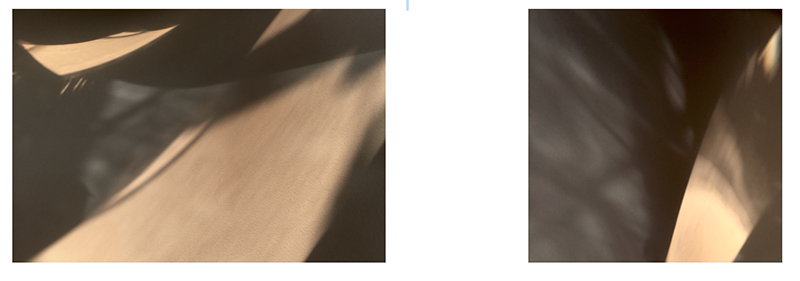
Bill Parker had an enormous influence on me and my photographic images, as well as my thinking, working and eventually teaching processes. I always found him to be, as he first said, very catholic in how he responded to images, whether they were historical or contemporary, student or professional. It’s important to note, as he often pointed out, that he was referring to the small “c” catholic, and not to the Catholic religion. I think he made that point in an understated way, but that in fact it was at the heart of how he approached looking at and appreciating all images. As others who are showing work in this exhibit might mention, Bill seemed to have a photographic memory and an ability for recall of text and images that was extraordinary. He brought those gifts to bear in a remarkable way whenever he was considering a photographer and their work, whether it was a single image or a body of work.
Brian Swift lives with his wife in Kaneohe, Hawaii on the island of Oahu.He has retired from teaching photography, continues to make images, and has been doing commissions for clients on demand.
He earned an MFA from the Rhode Island School of Design in 1979 and has exhibited his work nationally and internationally.
John Willis

How can I briefly describe Billy’s influence? I have many fond memories of Billy Parker as a mentor and friend. My first deep connection with him was when I entered graduate photography studies at R.I.S.D. I cherished Billy’s enthusiasm for teaching, artistic practices, and life. Even after taking the course, I regularly attended his Photo Iconography Course lectures.
As he often did one evening, Billy marched into class a few minutes late and set right into his lecture. He came prepared with a stack of 20 – 35mm slides. He had so much to say while sharing each image, but he rarely made it through more than six and often not that many. I don’t believe I ever had the chance to see the whole selection of images he had brought for a lecture in one class session.
John Willis is a photographer whose personal work and teaching typically fall within the social documentary genre, engaging the communities he works within. He considers volunteer and service community engagement work an important part of his life.
Willis is the recipient of a John Simon Guggenheim Memorial Foundation Fellowship in Photography, 2010 and an Open Society Institute Community Engagement Grant, among other awards and grants. His photographs are in numerous permanent collections, among them the Center for Creative Photography, George Eastman House International Museum of Photography and Film, J. Paul Getty Museum, Library of Congress, Museum of Fine Arts, Boston, Museum of Fine Arts, National Gallery of Art, San Francisco Museum of Modern Art, Bibliotheque Nationale de France, Tokyo Metropolitan Museum of Photography and Whitney Museum of American Art.
Willis’ books include Mni Wiconi/Water Is Life: Honoring the Water Protectors at Standing Rock and Everywhere in the Ongoing Struggle for Indigenous Sovereignty, Views from the Reservation, Recycled Realities(with Tom Young) and Requiem for the Innocent, El Paso and Beyond, a collaboration with writer Robin Behn and composer Matan Rubenstein. The project has also become a short experimental film designed for art installation.
His work with First Nations people began in 1992 when he was introduced to Eugene Reddest Comes Out First, an Oglala Lakota elder. His appreciation for the Lakota and other tribes and their beautiful living traditions stems partly from the fact that his family immigrated to the US in the early 20th century to escape persecution, leaving him void of many cultural traditions.
Opening Reception: June 19th 5:00 – 8:00pm
On View: Thursday, June 19th – July 11th
The Rhode Island Center for Photographic Arts, 118 N. Main St. Providence, RI
Located in the heart of Providence, RICPA was founded to inspire creative development and provide opportunities to engage with the community through exhibitions, education, publication, and mutual support.
RICPA exists to create a diverse and supportive community for individuals interested in learning or working in the Photographic Arts. We strive to provide an environment conducive to the free exchange of ideas in an open and cooperative space. Members should share a passion for creating, appreciating, or learning about all forms of photo-based media. We work to provide a platform for artistic expression, that fosters dialogue and drives innovation in the photographic arts.
The Gallery at the Rhode Island Center for Photographic Arts is a member of Gallery Night Providence https://www.gallerynight.org/
Want to become a RICPA Member? Membership brings many benefits and discounts, for more information and to find the membership level that fits you, visit our website at https://www.riphotocenter.org/membership-info/ You may become a member at entry, member benefits begin immediately and run 365 days from your start date.
Questions: Contact gallery@riphotocenter.org To learn about other RICPA exhibits and programs, visit https://www.riphotocenter.org/.




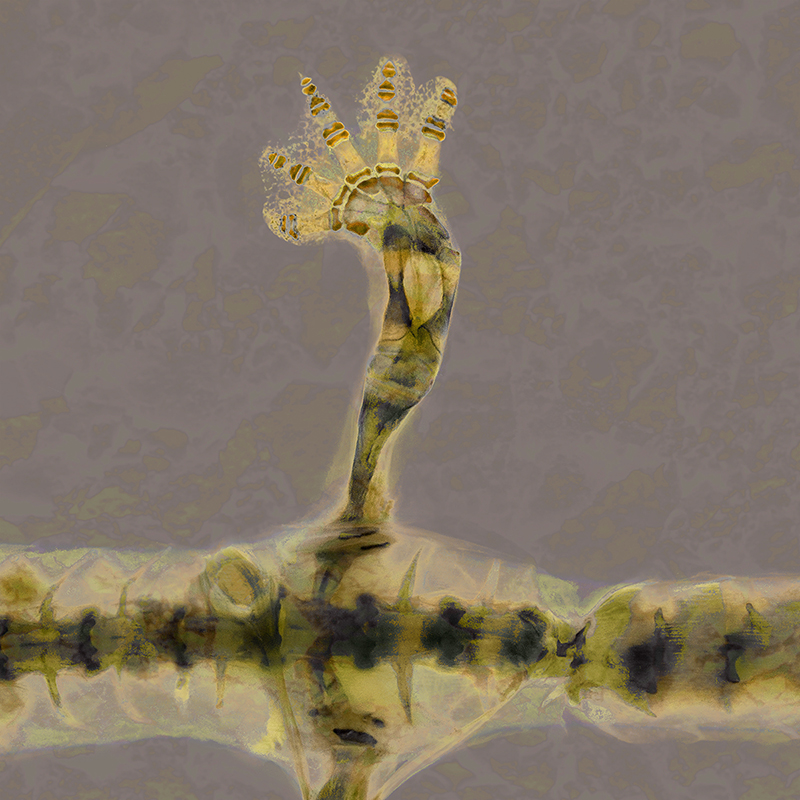


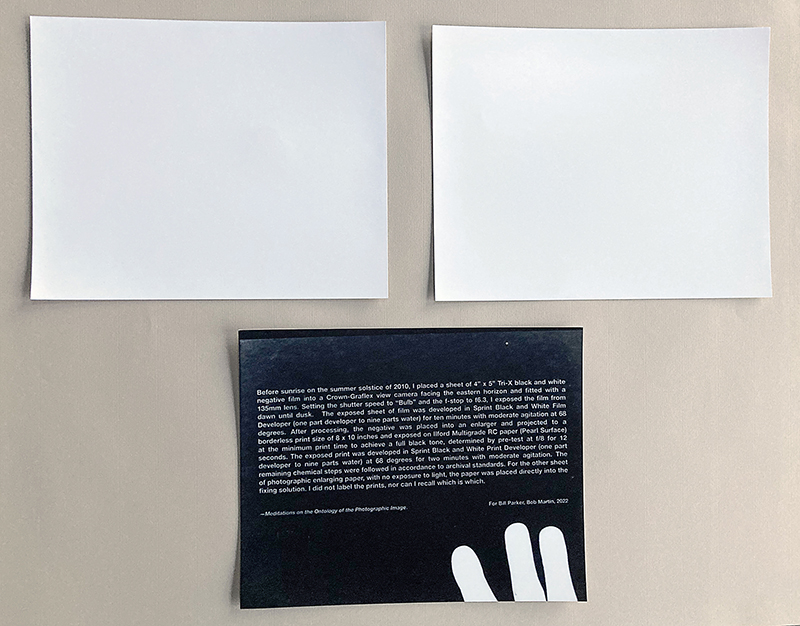











Leave a Reply